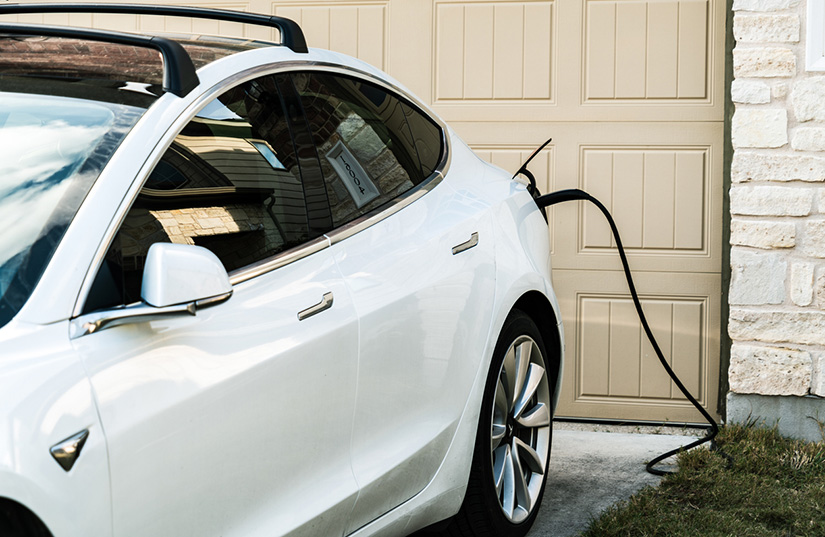The sky is not falling in the lithium sector, but what is moving markets is misinformation and misinterpretation of sales trends. Lithium carbonite is a vital critical element for electric vehicles. So when Ford and General Motors reported demand for their EV’s fell short of projections in late October 2023, pandemonium broke out with bearish news reports on the future of EV’s and its underlying key critical elements including lithium and cobalt.
With the U.S. in an election year, is it any surprise that the energy metal conversation got hijacked by political strategists looking to rain on President Biden’s green energy parade? The move to accelerated decarbonization is not a partisan issue; it is about the survival of our planet.
Every new major innovation experience hiccups on the way to mainstream adoption, but the EV market has had stratospheric growth.
Electric cars’ fast lane trajectory
All-electric car sales in the United States continue to increase at a strong clip, outpacing the general car market. “A record 1.2 million U.S. vehicle buyers chose to go electric last year, according to estimates from Kelley Blue Book with 1,189,051 new electric vehicles (EVs) put into service. Experian/Automotive News registration data reports that the total number of Battery Electric Vehicle (BEV) registrations during the first eight months of 2023 were 754,811, 64% higher than a year ago, and about 7.3% of the total market, up from 5% at that time in 2022.
With the U.S. government planning to end purchases of gas-powered vehicles by 2035, downstream end users will soon be entirely dependent on the guaranteed long-term availability of steady supplies of lithium carbonate (battery-grade lithium).
Why low prices cure low prices
Today’s low lithium prices disrupt the applecart of mining and exploration. A thinning of the (lithium) herds may be on the horizon this year with the ‘perfect storm’ of low lithium carbonite prices and limited access to new capital. Marginal prospectors and junior miners will exit stage left as even major producers curtail projects.
The ‘lithium mania’ chapter officially came to an abrupt close on January 17th when the world’s largest producer, Albemarle Corp., announced a reduction in project spending. With the price of battery-grade lithium carbonate descending in the last 12 months, widely attributed to oversupplied markets in Asia, the ‘mania’ subsided and ‘depression’ arrived. Prospectors and juniors drawn to lithium, akin to the dot.com euphoria in the ‘90s, pulled back in record numbers delaying or suspending projects.
So, where does that leave us with availability to lithium, sourced from geopolitically friendly regions? Will our brine, hard rock, and claystone ‘rockstars’ have access to the capital needed to bring projects to fruition in geopolitically friendly regions of the world?
Foundation of our environmental future
Our world will transition from fossil fuels and the demand for lithium will increase in the coming decade. Canada is paying $30 billion in incentives to build three battery plants which require battery-related energy metals including lithium. President Biden’s Bipartisan Infrastructure Law includes $6 billion in incentives to support R&D and production of batteries in the US, as well as supporting the creation of a domestic supply chain. America’s Inflation Reduction Act (IRA) allocates $10 billion to support construction of clean energy tech factories and retrofitting existing factories to make clean energy equipment and components including R&D support, US battery production and the creation of a domestic supply chain.
Divestment from China Crucial to Western Nations’ Environmentally & Fiscally Sound Future The US recognized 50 minerals, including lithium, as critical to the nation’s future and security. Since 2020, many Western nations’ divestment from China, a Goliath in energy metals mining and processing which controls nearly 60% of the world’s capacity for processing raw lithium products into battery-grade chemicals, has resulted in China scouting the world for mining assets in regions that do not have geopolitical conflicts with the world’s second most populous country.
Lithium subject to vagaries of spot market pricing
Much of the volatility around lithium prices is because most lithium products are traded using long-term contracts with wildly varying differentials between prices achieved for lithium carbonate from a specific mining project as compared to China’s spot lithium carbonate CIF Asia price, with the spot price shedding light on price movements on a shorter-term basis.
China is the world’s largest consumer and producer of lithium carbonate, and our future depends on North America taking that mantle back. With China calling the shots on commodity pricing, they are the primary factor contributing to spot lithium price instability. Questions about credibility of their information has paved the way for market manipulation and presented major challenges for investors in forecasting market movements. We also see China continuing to stockpile their lithium inventory in a “move analysts see as an effort to alleviate fears of a shortage.”
With the political and economic imperative to decouple from China’s economy, the United States and other geopolitically friendly nations must provide the raw materials for the industrialized world’s green energy revolution.
While the United States holds about 8 million metric tons of lithium in reserve, ranking it among the top five countries in the world, right now only a fraction of the world’s supply is produced at one solitary lithium brine mine in Nevada called Silver Peak, run by Albemarle Corp. America has some of the world’s highest quality, battery grade lithium carbonite, waiting to be developed.
Lithium’s future is green
Benchmark Intelligence forecasts price stability in 2024 but that the “lithium market balance remains fragile” with “only a single major project delay throwing this narrow surplus into a deficit.” Benchmark “estimates the market will return to deficit from 2028, with prices expected to react 12 months ahead of the deficit emerging. They expect the deficit to reach 390,000 tons in 2030 and 1,900,000 tons by 2040.
The current reverses in lithium pricing “provides a good buying opportunity for lithium stocks as demand growth over the next decade should support long-term prices, according to Wilsons Advisory with BloombergNEF projecting global demand for lithium to grow nearly five times by the end of the decade.
Armed with the ability to bring substantial new lithium production and refining operations online, we will be able to meet surging demand from the lithium-ion battery and energy metal supply chains. We will see higher prices for lithium carbonite that ensure today’s low prices will cure today’s market doldrums.

Graham Harris is Chairman and Director of Surge Battery Metals Inc., a pure-play lithium company focused on its flagship project Nevada North Lithium Project in Elko County. He was previously founder, chair and director of Millennial Lithium Corp., which was acquired by Lithium Americas.
The views and opinions expressed in this article are the author’s own, and do not necessarily reflect those held by pv magazine.
This content is protected by copyright and may not be reused. If you want to cooperate with us and would like to reuse some of our content, please contact: editors@pv-magazine.com.








By submitting this form you agree to pv magazine using your data for the purposes of publishing your comment.
Your personal data will only be disclosed or otherwise transmitted to third parties for the purposes of spam filtering or if this is necessary for technical maintenance of the website. Any other transfer to third parties will not take place unless this is justified on the basis of applicable data protection regulations or if pv magazine is legally obliged to do so.
You may revoke this consent at any time with effect for the future, in which case your personal data will be deleted immediately. Otherwise, your data will be deleted if pv magazine has processed your request or the purpose of data storage is fulfilled.
Further information on data privacy can be found in our Data Protection Policy.